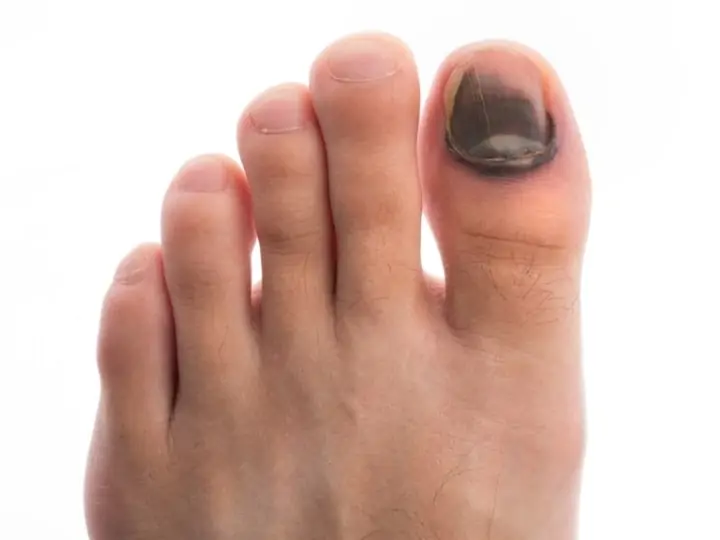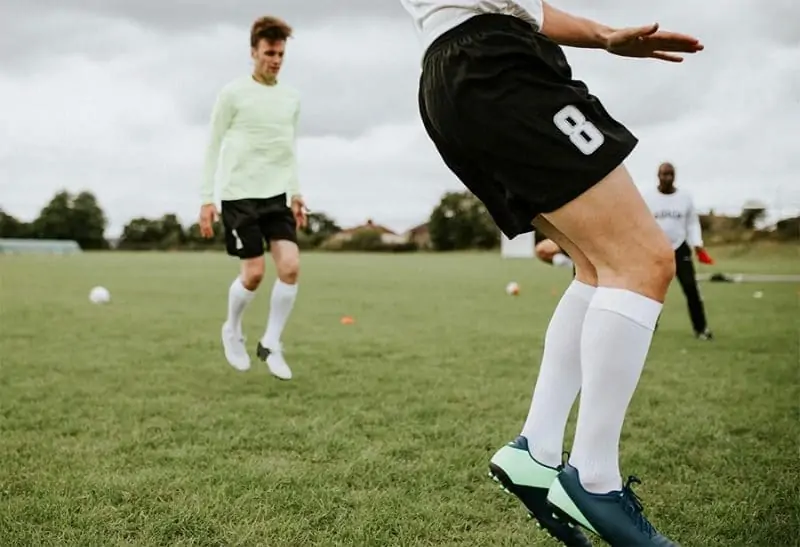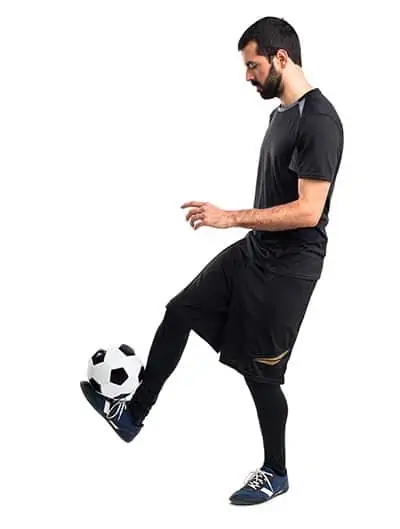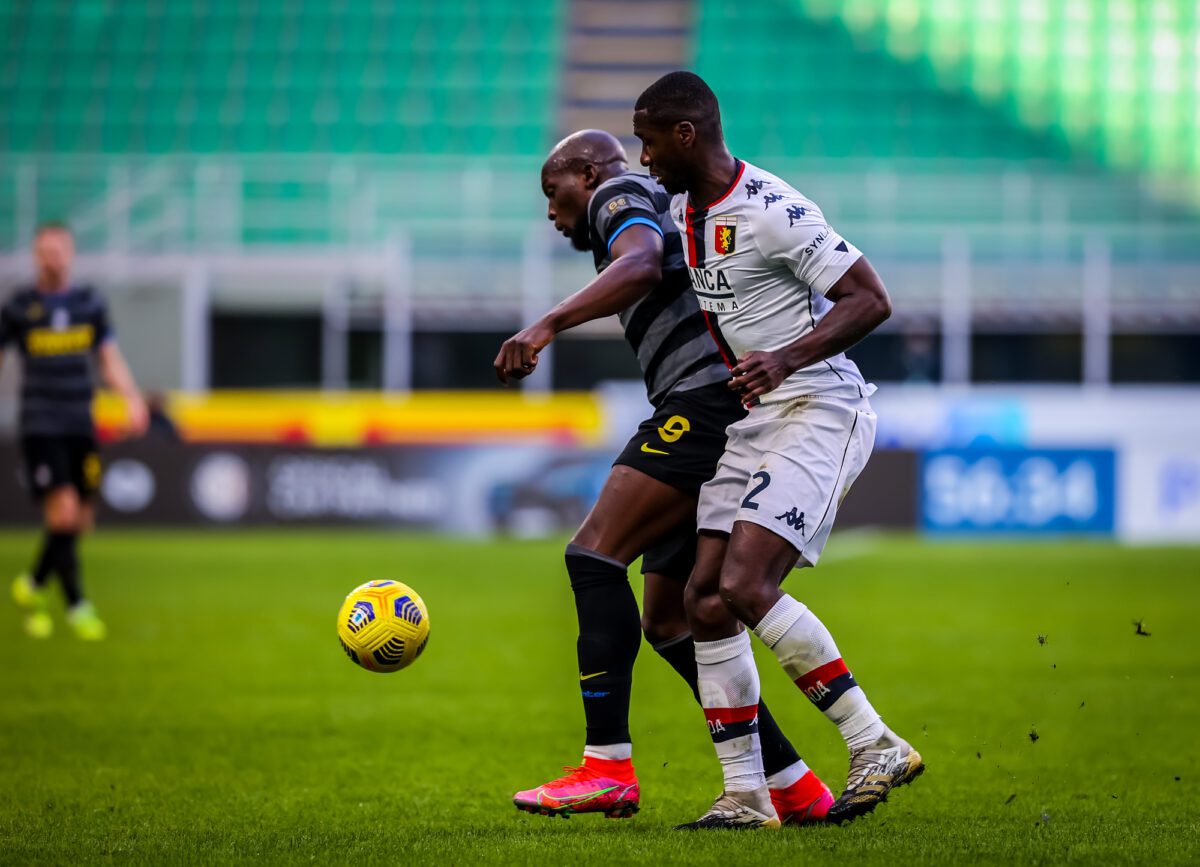Share the post "Soccer Player Toenails (Injury + Protection)"
Throughout my soccer career, I’ve lost toenails many, many times. For soccer players, it’s a common side effect of the game we love.
However, newer players or parents of players may be concerned about playing soccer without all 10 toenails.
We’ll answer some of the most common questions about playing soccer without a toenail including:
- Causes of missing toenails
- How to determine if you should play with a missing toenail
- Tips for safely playing soccer without a toenail
Today, we’ll take a closer look at how missing toenails can impact your soccer play.

Can You Still Play Soccer When Missing a Toenail?
The answer here is not cut and dry. Many times, you can still play soccer with a missing toenail. I’ve done it several times in my career. Right now, I have a toenail that is dying and falling off (it’s gross, but you must know!).
However, there are some cases when you should not play with a missing toenail. Your doctor may recommend that you stay out if your missing nail is due to infection or if the area is very painful.
If you’re unsure if you should play without a toenail, you should consult your doctor/athletic trainer.
Why Do Soccer Players Have Missing Toenails?
Soccer players don’t have the best reputation for beautiful feet. If I’m being honest, the jokes about soccer players having rough feet are pretty accurate.
In soccer, there are many reasons why players may have missing toenails. Some of the most common are:
- Toenail gets stepped on by another player’s cleat.
- Toenail fungus/ infection.
- Ingrown toenails from illfitting cleats.

Can soccer cause ingrown toenails?
Many soccer players experience ingrown toenails. An ingrown toenail is when the nail bends in toward the skin. Ingrown nails can be extremely painful and even lead to infection when not treated properly.
Just playing soccer won’t cause an ingrown toenail, but unfortunately, certain cleats can.
Cleats
Wearing too narrow or ill-fitting cleats is a major risk factor for an ingrown toenail.
When players wear cleats that are too small or narrow, the cleats can press on the toenail and push it into the skin.
Jamming In Cleats
The toes repeatedly jamming the top of the cleat can also lead to ingrown nails or other nail damage.
As silly as it sounds, an ingrown toenail can keep you from playing soccer for a bit. Continuing to play with an ingrown nail may cause more problems and infection.
The discomfort can also through you off your game.
Fortunately, cutting toenails correctly and wearing properly fitting cleats can help soccer players prevent ingrown toenails.

When to Play Soccer with a Missing Toenail
Missing a toenail is not necessarily a reason to hang up your boots for weeks on end. Here are some hints that it may be okay to continue playing:
- The new nail has already begun growing in.
- Since losing the nail, the area is not painful.
- You can comfortably wear cleats.
- You are not noticing the missing nail while playing.
- There is no sign of infection.
When You Should Not Play Soccer with a Missing Toenail
In a sport that uses your feet the way soccer toes, even a toenail makes a difference. Many times, you can play with a missing toenail, but sometimes you shouldn’t.
Here are some times when you should not play with a missing toenail:
- There is signficiant inflammation and/or infection.
- There is no new toenail underneath.
- It is painful to wear shoes/ cleats.
- The missing nail is impacting your playing.

Tips for Playing Soccer with a Missing Toenail
Most of the time, a missing toenail will not prevent you from playing soccer. However, to prevent more serious injury you should take some precautions including:
- Allow the nail to fall off naturally, do not tear it off.
- Tape over the area to help protect it.
- Wear cleats that are the right size.
- Keep the nail trimmed short as it falls off.
Protect your toes with these gel toe protectors until your toe feels better;
- Prevents Painful Rubbing: Friction can wreak havoc on your…
- Non-Slip Comfy Gel: Our Gel Toe Protectors are designed with…
- Adjustable And Easy-To-Wear: Ever struggle to wrap a bandage…
- Must-Have For Runners, Walkers, And Everyone Else: So…
- A Commitment To Your Satisfaction: At Dr. Frederick’s…
Product: Updated 2024-10-21 | Images: Amazon Product Advertising API | #ad – soccerblade.com is an Amazon Associate
Toenail Advice
Overall, you can play soccer without a toenail. A loose or missing toenail often does not have to keep you from playing.
Just take the proper precautions to avoid serious injury, like taping the nail and trimming off the dead parts.
Sometimes, a missing toenail can keep you out of the game. If the toenail issue is related to a serious infection or another toe injury, you may need to let it heal before playing.
Ultimately, use your best judgment. If the missing toenail is not painful or raw, then you may be fine to play soccer.
However, if you can barely get your cleats on and feel pain with every micro movement, it may be best to treat the toenail first.
Share the post "Soccer Player Toenails (Injury + Protection)"
Joel is a seasoned soccer journalist and analyst with many years of experience in the field. Joel specializes in game analysis, player profiles, transfer news, and has a keen eye for the tactical nuances of the game. He played at various levels in the game and coached teams - he is happy to share his insight with you.




